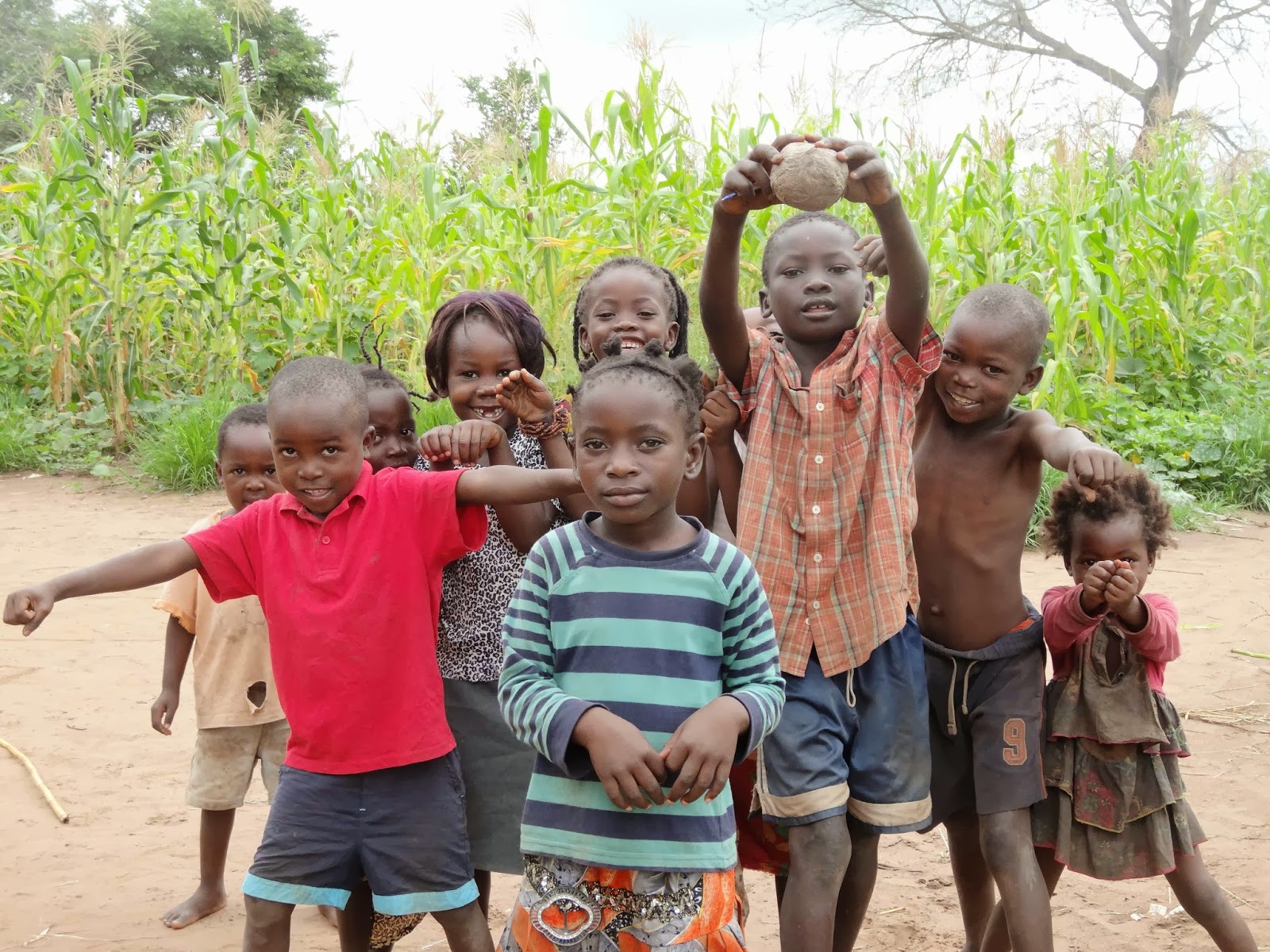I am working at Kakumbi clinic which serves the people who live in the flattish land of the Luangwa valley, which is a floodplain of mostly productive agricultural land on which the local people grow their maize, cotton, rice, and pumpkins.
Further away from the river the land is rocky, sandy, and hilly and is mixed grass and woodland. The status of this land is as a so called “Game Management Area’ , it is not actually in the National Park but the animals and trees are protected. There are very few or no tracks or paths and no signs. It really is wild bush, with a huge variety of indigenous trees.
With some local mzungu (whites) I set off early on Sunday morning to explore this landscape. After a serious 4 wheel drive trip fording some streams we set off into the bush,
watched by a large family of wart hogs - which are certainly the most cheerful animals in africa.
Some of the time we could follow elephant or buffalo tracks, but often we were stepping from rock to rock up and down some very bumpy terrain. I spent some time nervously scanning the grass for snakes - a total waste of time! We could usually see the next hill
often around 50 to 100 yards away - but seldom further than that.
At regular intervals we could see sawn off tree stumps and usually nearby there would be
a saw pit. This is a rectangular hole about 10 feet deep, 3 feet wide and 10 feet long. It will have been dug by hand through the rocky ground and then the hardwood tree trunks will have been rolled into place and cut into planks using a double ended hand saw with one man at the top and one at the bottom. After this prodigious job the planks are carried out of the area by hand across the rocky and hilly terrain.
But no longer- Steve Tolan, an ex UK policeman who is with us on the walk, has caught some of the culprits and as a result they have decided to stop logging in this area.
After a couple of hours we reached some the highest point in the area. and climb the highest rock and take a few pics and enjoy the view. We decide to do a bit of a loop along a ridge and then go back to the car from there. We see rock hyrax(closest relative to elephants!) and find a cave which was inhabited hundreds of years ago and has old and faint paintmarks which have been attributed to the unknown inhabitants - possibly pygmies - who were here before the present zambian race. We have a bit of a rest and head for home, which we know will involve crossing a small river which meanders back and forth across our intended path.
So we cross the river and then come to it again- we think it must be a loop in the river and expect to meet another crossing soon. But we don’t - which is odd! as are we not supposed to be getting to the other side? We suppress our doubts and press on. Then we see a rocky outcrop and the truth dawns slowly. We have spent the past hour going in a circle!
Cue a rest and then luckily there is a place where we can climb up and get a view. Using the sun to guide us is tricky - as it is shining from directly overhead. But we try to keep on the same heading nonetheless and eventually to our great relief Steve announces that he is on familiar terrain and that we should just keep on for about 2 more miles and the car would appear.
Which it indeed did! So only a couple of hours behind schedule we got home. Somewhat tired!






